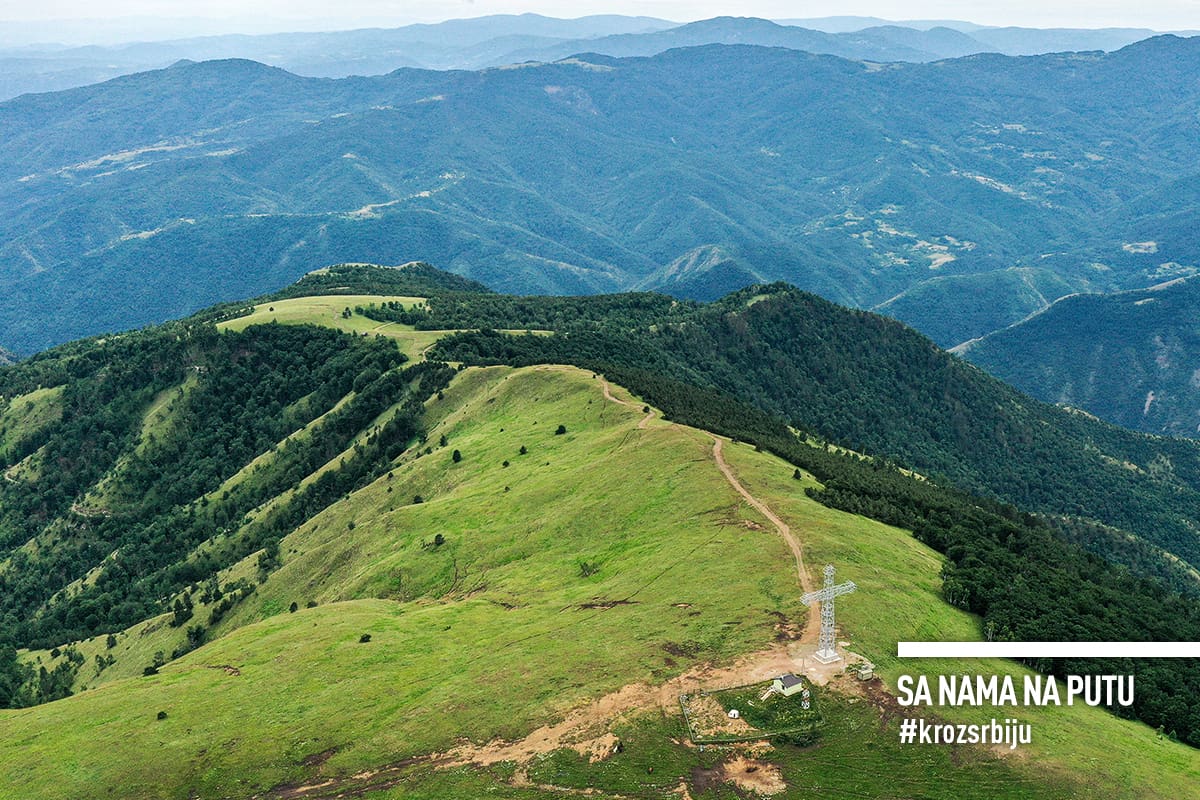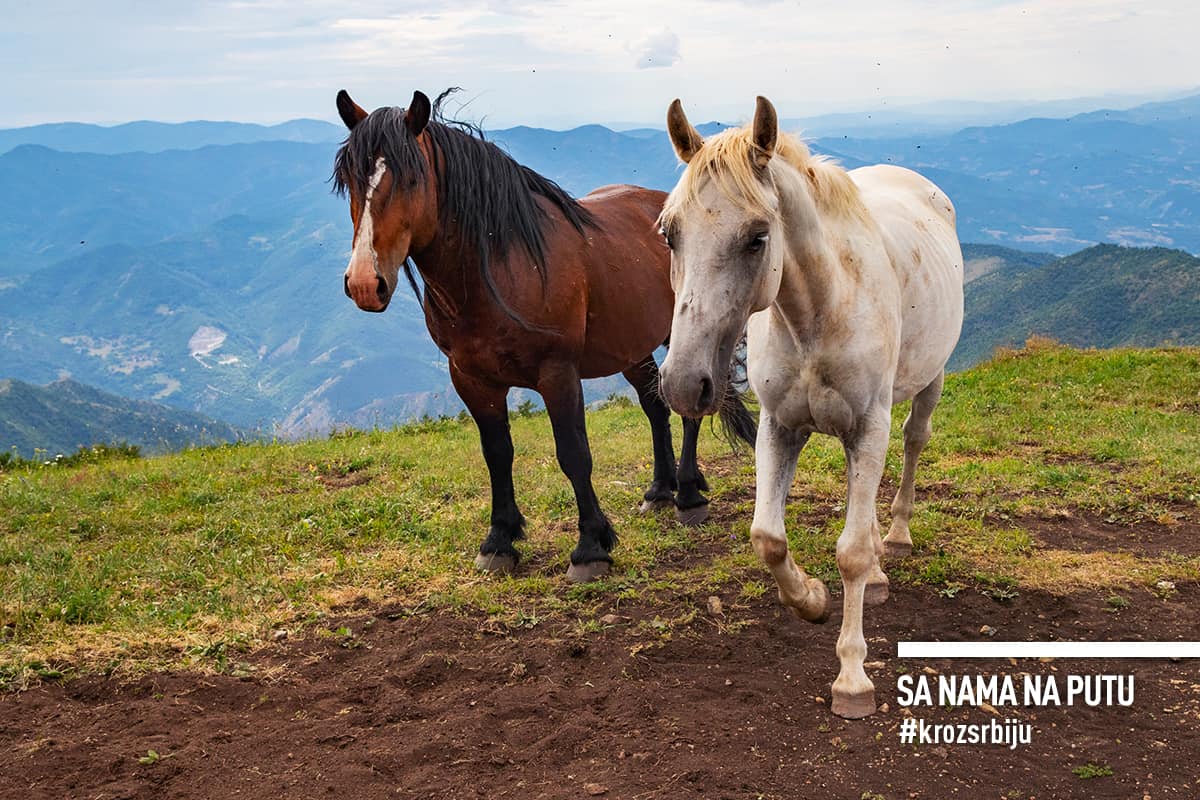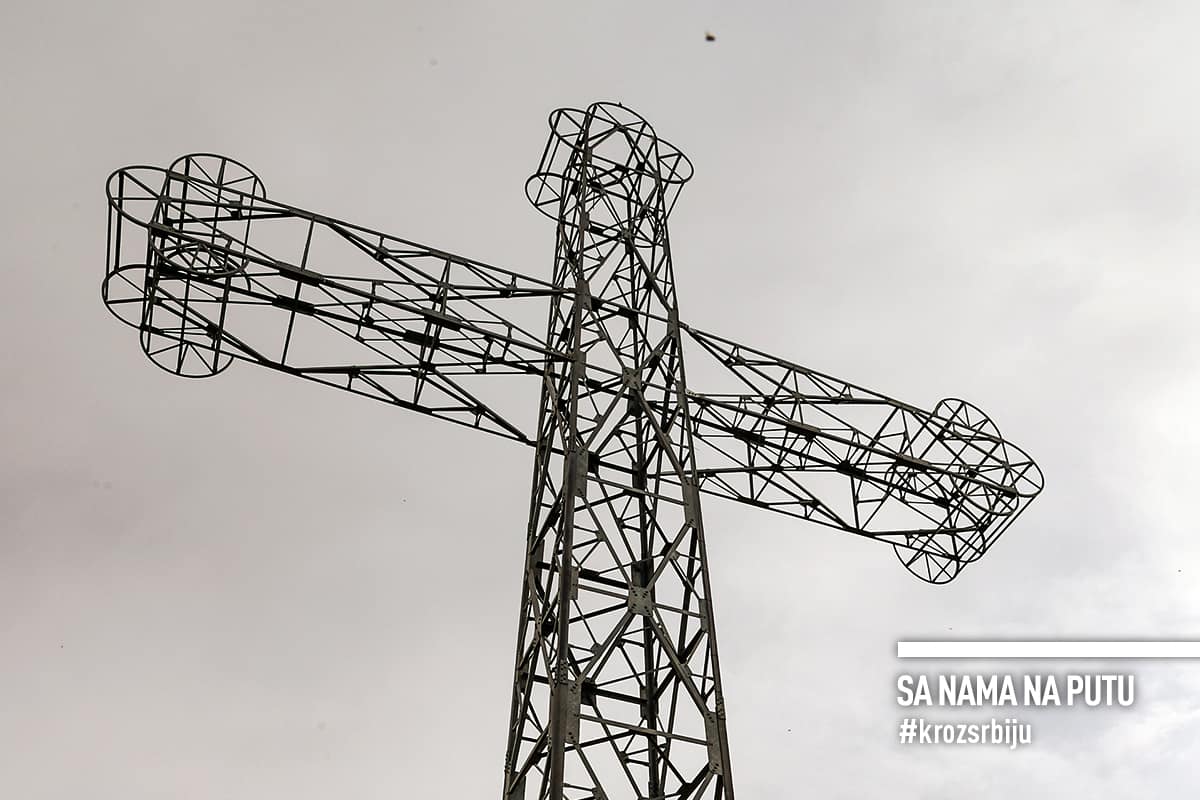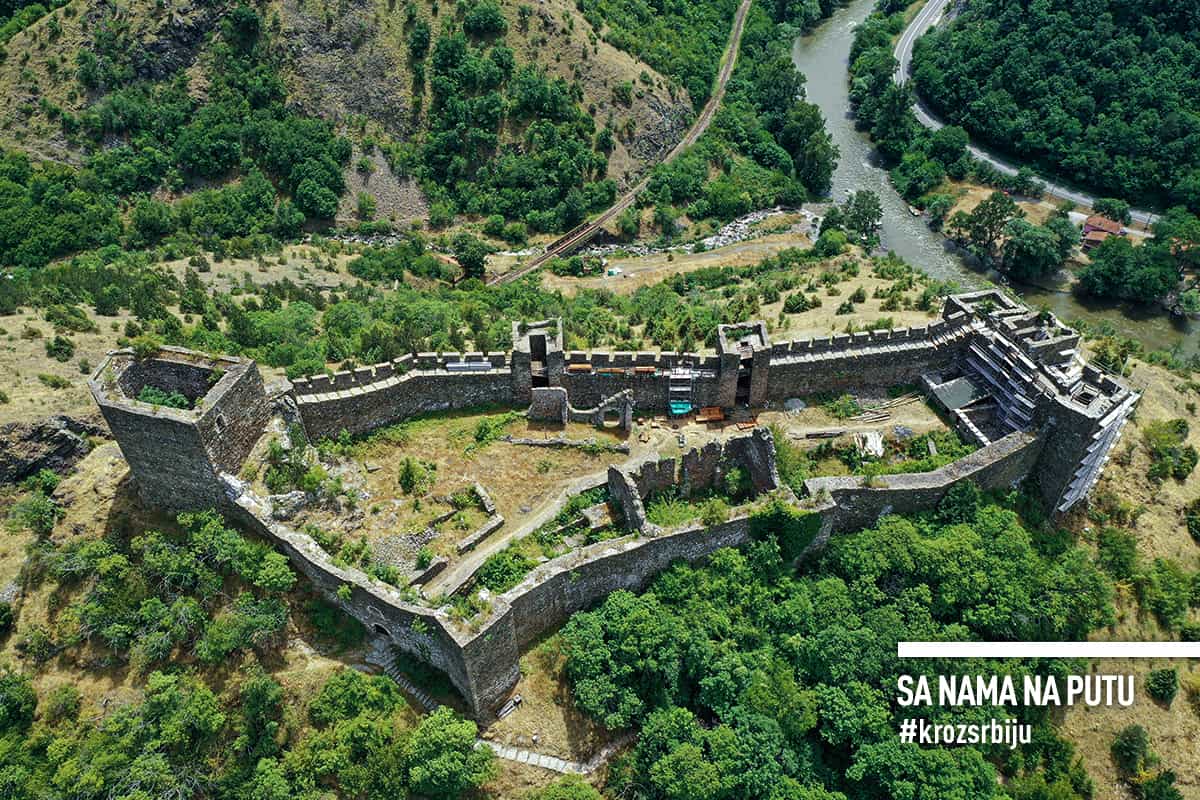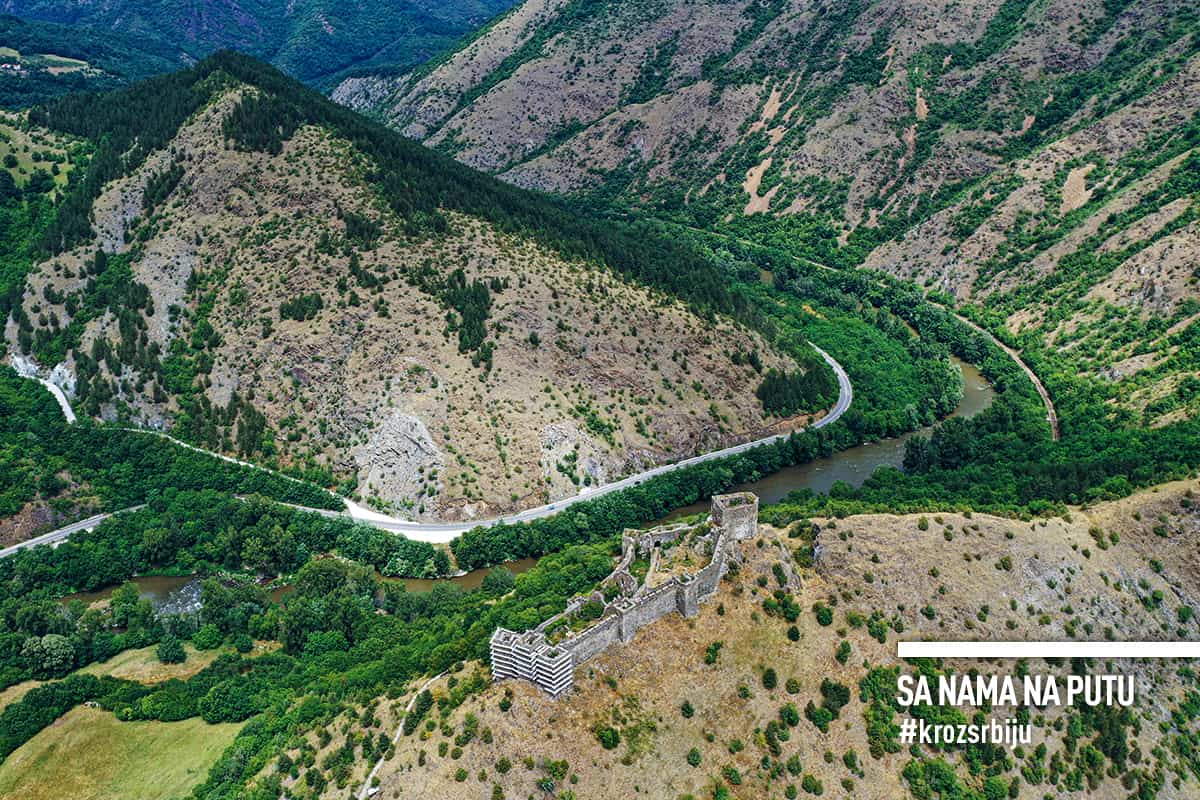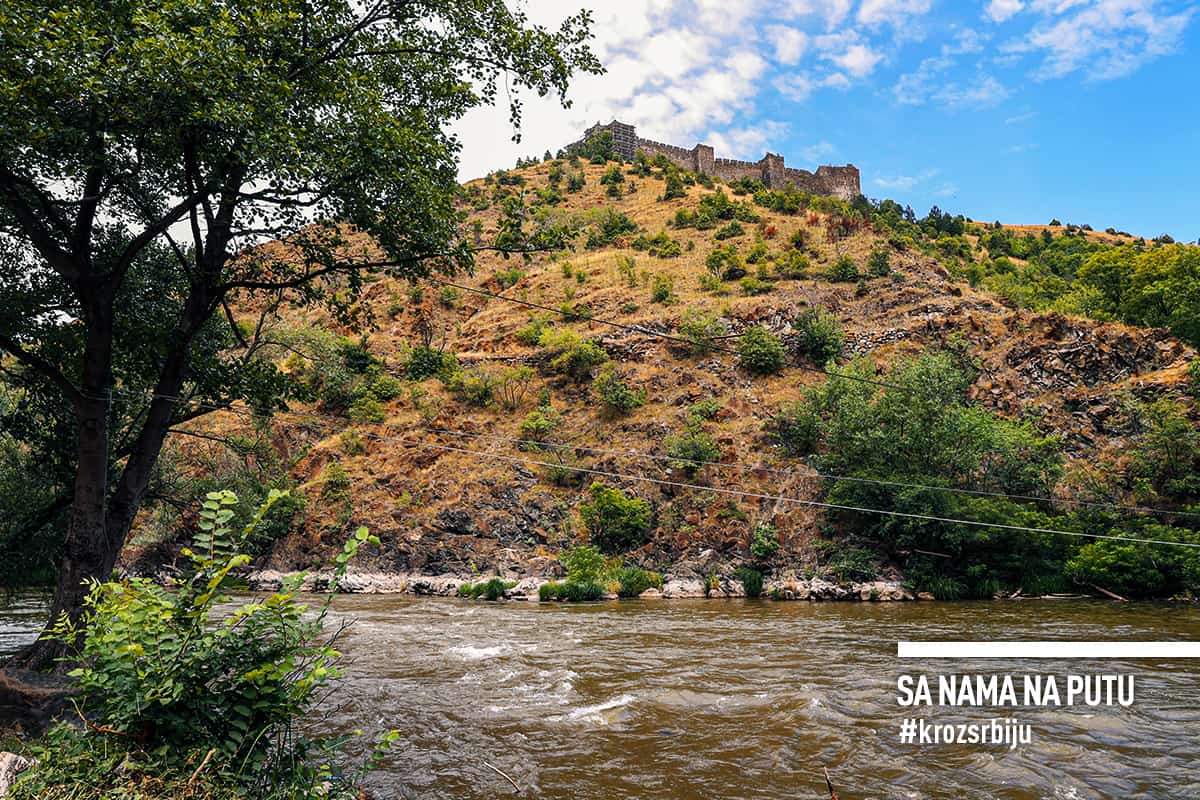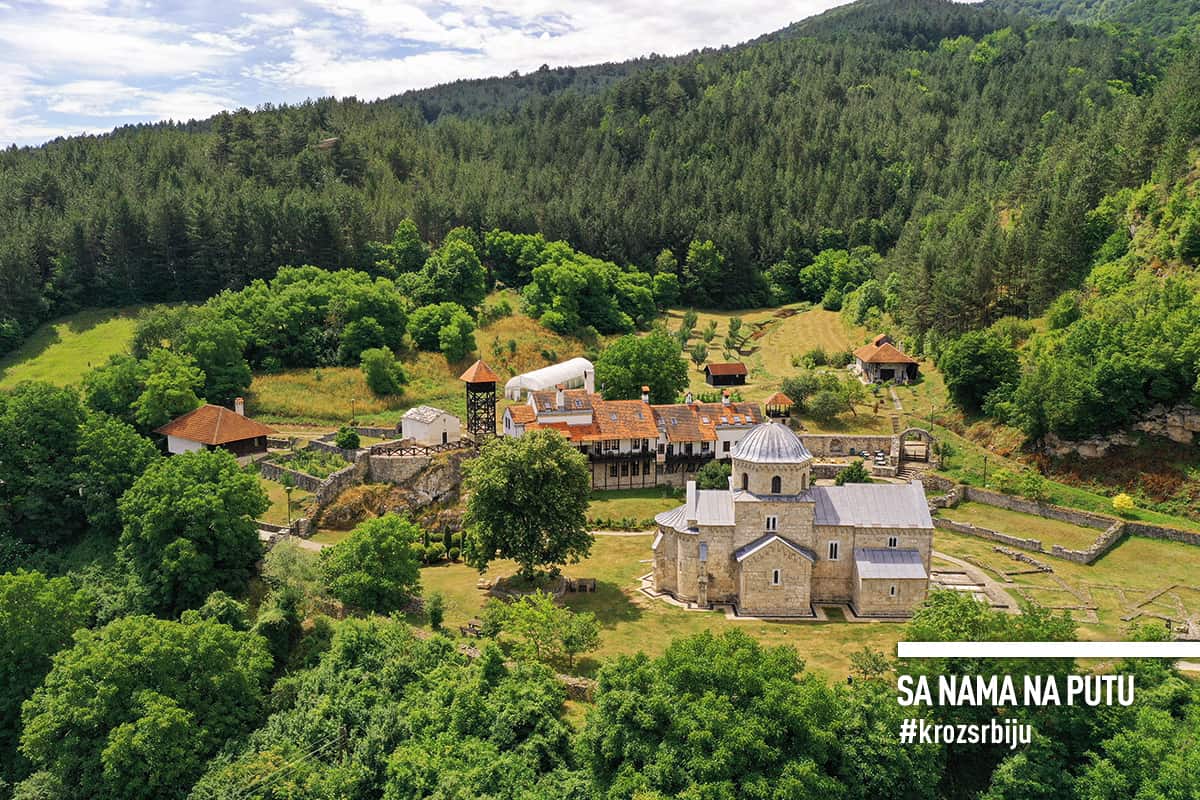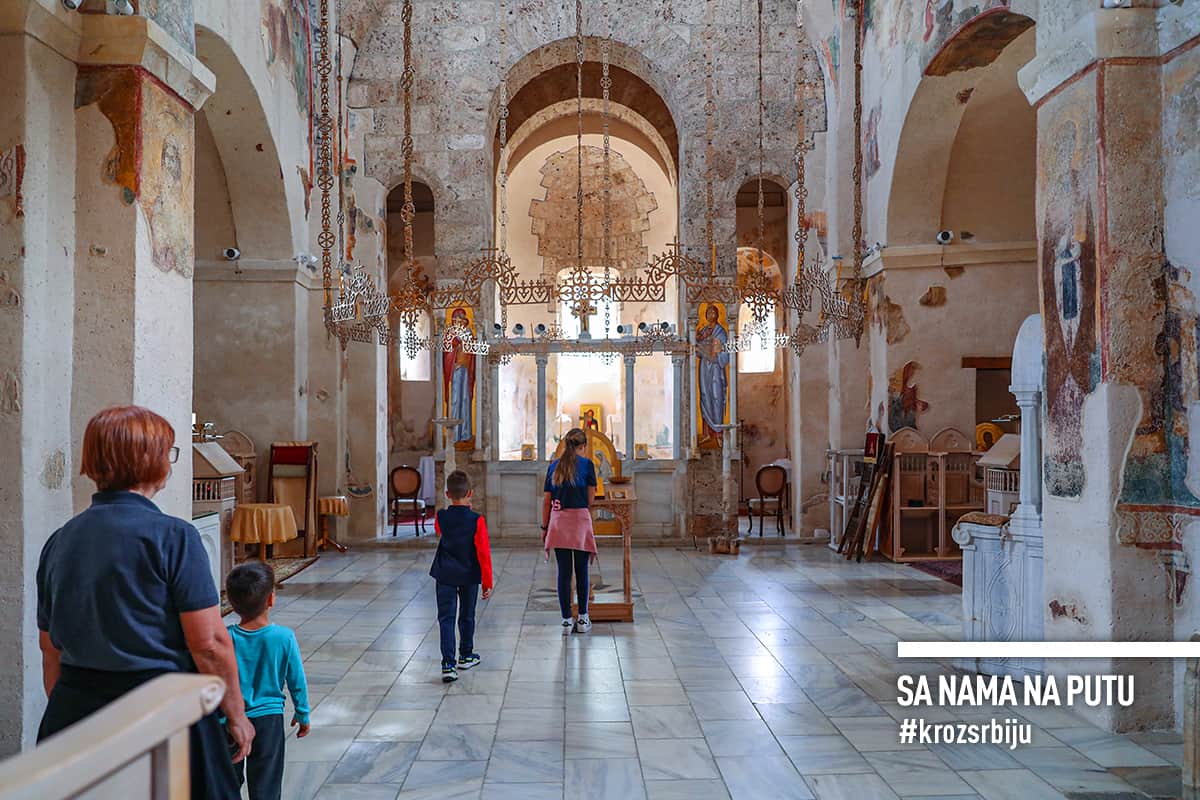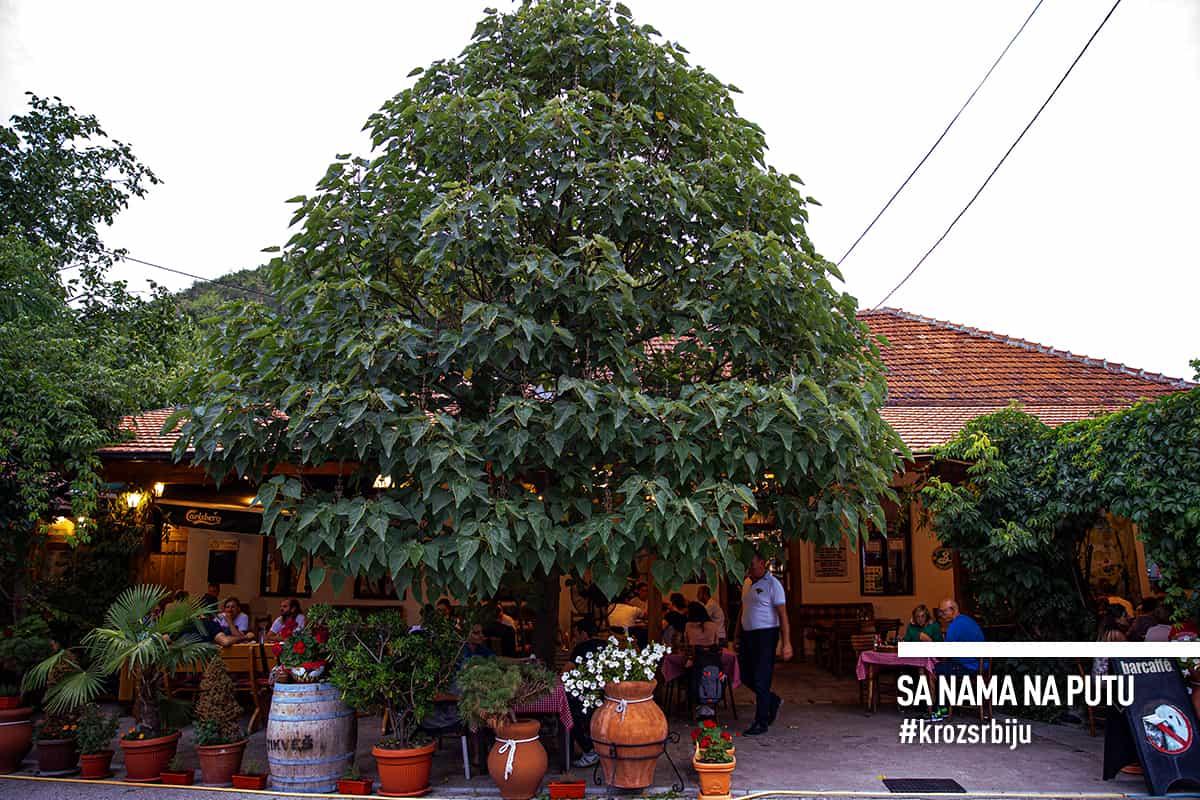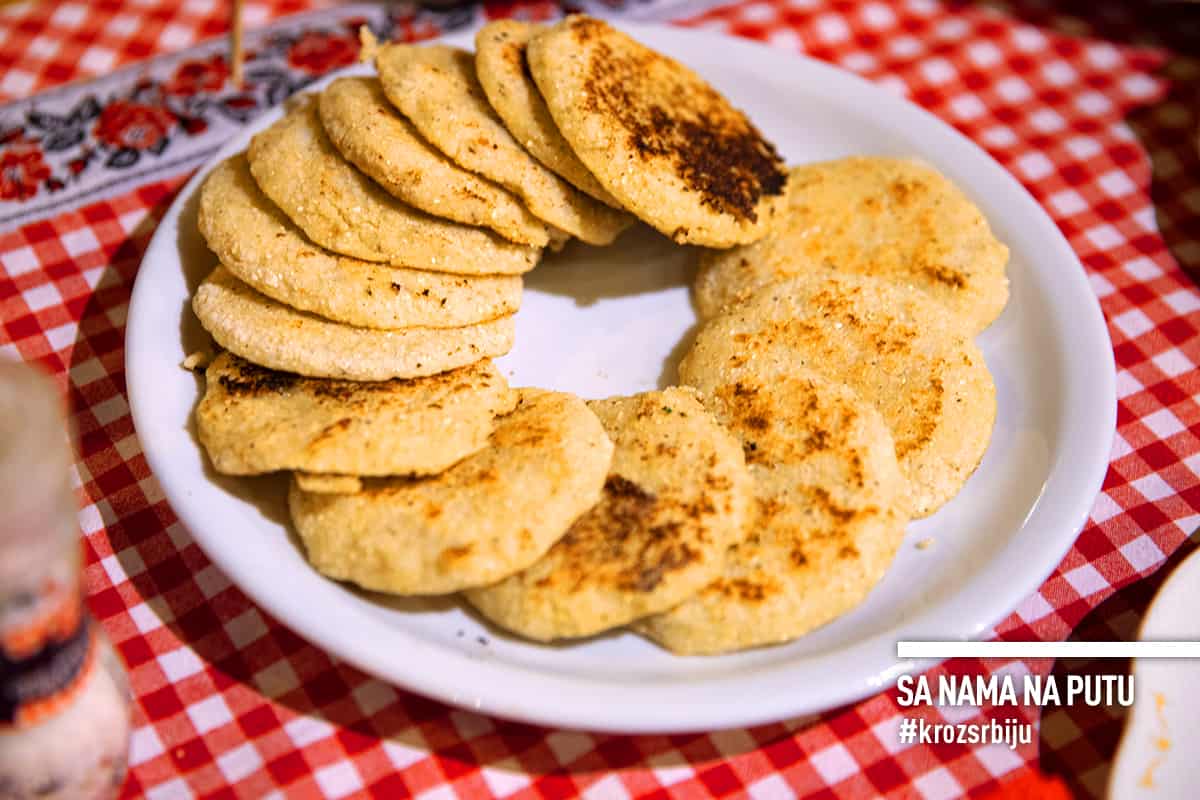We continue the mountainous summer in central Serbia, in the vicinity of Kraljevo. On these heights, bordered by three waters – the Ibar, the Ribnica and the Brezanska rivers, whose deep valleys intersected Stolovi on long ridges and gave it a star shape. The western slopes created the gorge of the restless Ibar, the fairytalish valley, which hides the pearls of the Serbian Middle Ages.

Why visit Stolovi and Gradac?
1. Because wild horses are sitting on the Stolovi
Half wild, to be precise. Their exact number is not known, nor whether there are any loners and fugitives among them. However, it is known that cattle breeders have always lived in these mountainous areas. According to one of the many folk tales, the mediaeval hero above the heroes, Miloš Obilić, rode his horse – Ždralin, right on the Stolovi mount.

The horses were previously tamed by the local villagers who would take them back to the hills in the summer to have less work. In time, they would be left in the wild for longer and longer periods, sometimes even during the winter, and the horses would manage, learn to survive and finally become independent. And when they were brought back to the tame, they would often flee back to freedom. So they became semi-wild. In winter, conditions can be very harsh and horses are left without food, but some kindhearted souls find a way to deliver it to them.
The hike to see these four-legged gracious animals is quite arduous. We choose the road from the direction of the Žiča settlement. The most resilient ones can walk. We grabbed a plateau with a beautiful view of the environment, believing that we managed to reach high and far enough, close to the horses. While we are impatiently looking for them with our eyes, we are almost convinced that only an SUV can come this far. When suddenly, there is an “ordinary” four-wheeler arriving from a neighboring hill. All seats are occupied in the cabin, behind the a lady on the driver seat. She is smiling and relaxed as if she drives along a runway. We are confused, and at the same time, amazed. The merry five steered us uphill, as far as wheels can reach.
At some point, we leave the SUV and continue on foot. We do not know exactly where the horses are hiding, we just know we have to find them. As soon as we just conquer one hill, a new one emerges… Along the way, we meet a younger couple from Vojvodina, lovers of hiking in nature. They have been climbing, hiking and wandering since morning, but they do not give up. We are grateful for the unexpected company. It is easier. We joke and encourage each other. We finally see the much desired scene. Perseverance paid off this time. Several beauties calmly nibble on the grass, ignoring the newcomers. It was only when the young couple took the carrots out of their backpacks that they began to approach, slowly. The animal immediately smells food, but it also recognizes kindness. And they are not that wild, we thought. But be careful and gentle with these beauties.
There are several legends associated with the name of the Stolovi. According to one of them, the name comes from the main ridge that looks like a table from a distance. On the other hand, before the battle in Kosovo, Prince Lazar often hunted there, and benches and tables were made for lunch. According to the third legend, the first Serbian archbishop, Saint Sava, dined in a nearby monastery, Žiča.

The nature of the Stolovi is completely untouched and wild, like its most famous inhabitants. Not very wooded and quite dry, without streams and springs. Pastures, low vegetation, shrubs, wildflowers, and hills that stretch indefinitely.
We are satisfied, but exhausted. Our vehicle presumably also needs refreshment. The nearest gas station is in Kraljevo – NIS Petrol. We are not wasting time. We pay for fuel with the Drive.Go app, without going to the cash register. From the car, ‘cause we are in a hurry.
2. Because Maglič is the guardian of the heart of Nemanjić dinasty’s Serbia
Raised on a high, steep cliff. Hard to access. Almost unconquerable. It has survived hundreds of wars, uprisings and riots. It owes the appreciation to its position, but also to the fog, which would often occupy its bastions. According to folk tales, it had been named after that fog.

In addition to the fog, the fortress is shrouded in a veil of secrecy about his origins. It is not known for sure when and who raised it. It is assumed that it was built in the 13th century to protect the monastic endowments – Žiča, Studenica, Sopoćani and Đurđevi Stupovi, but also the once busy and lonely trade route that passed through the Ibar valley. The first written data about this medieval town come from 1337, from the time of Archbishop Danilo II, who built palaces and cells in Maglič.
The fortress covers more than 2,000 square meters, surrounded by walls with seven towers and the main one, Donjon Tower. Inside the city are the remains of a multi-storey palace with basements, the church of St. George, residential buildings, wells, and water tanks.

It has been declared a cultural monument of exceptional importance. But, as centuries ago, it remains inaccessible. There is no bridge over the Ibar. The swollen water took him away… And that one, according to the locals, was unsafe. Crossing is possible only by boat. At the moment, Maglič is in the scaffolding, works are being carried out to secure the ramparts. We have not been able to find out how long will it last. Nor when the Ibar will be bridged. In the meantime, the initiative “Let’s Renew Maglič” was launched, which would return the former city to its former glory. According to the mock-ups, it would look magnificent. Instead of the remains of the walls, the entrance to the Ibar valley would be dominated by a castle.
3. Because the Ibar valley is a natural and cultural pearl
The persistent water cut its way between two mountain giants – the Golija and the Kopaonik. Through the gorgeous nature, it had created unreal landscapes. Imbued with the breath of history and culture. It is called the Valley of Kings, the Valley of Centuries, and for romantic souls, it is the Valley of Lilacs. In the background of that name is a love story. According to one legend, the lilacs were planted by King Uroš I to express his love for the future Serbian queen Jelena, and according to another, their son, King Milutin, had the valley planted with lilac for his third chosen wife, after two failed marriages – third time the charm. One could maybe find some more tales about it. Whoever planted them must have done it for love, because the fragrant clumps, blue, pink and white colors still bloom today.

The Ibar river is a paradise for rafting lovers and is widely known for its Merry Descent. At the end of June or the beginning of July, hundreds of merrymakers are encouraged to sail downstream 25 kilometers to Kraljevo on rafts, rubber boats, kayaks or whatever they could sail and float. Fun and good time are guaranteed.
4. Because Gradac is the endowment of queen Jelena
She is known among the people as Jelena (Helen) d’Anjou. It is not known for sure from which country and family she originated, but it is assumed that her origin is connected with the Anjouans who ruled the south of Italy at that time. She used to sign as: “Jelena, by the grace of God, the queen of all Serbian lands and maritime lands”. She was the wife of the Serbian king Uroš I and the mother of kings Dragutin and Milutin. She had left an impressive mark in the Serbian medieval state. Her home was the first library and a college. She gathered poorer girls from the area and taught them various jobs and skills, but also literacy and music. She had ordered the transcription of books, which she later donated and bestowed and renovated many temples. Before her death, she became a nun and, at her own request, was buried in her endowment, the Gradac monastery. During the war with the Turks, her relics were moved and probably hidden. Even today, it is not known where they are.

The Gradac Monastery is housed on the slopes of the forested Golija mounting, above the Gradačka River. It was built in the last quarter of the 13th century. For the construction, Queen Jelena chose the best artists who, according to her instructions, combined Raska architectural style with sculptural ornaments of the Romanesque style. The frescoes, which suffered great damage, belong to the pinnacle of the monumental style, and are considered a continuation of the art of Sopoćani painters.

The main church, dedicated to the Most Holy Mother of God, was the tomb of Queen Jelena, and the smaller one was built in the honor of Saint Nicholas. It has suffered more demolition and looting, and a serious reconstruction was started only in the middle of the last century. Today it is a nunnery. A kind of testimony to the life of the great educator and wise Serbian queen.
5. Because the tavern At Mira’s offers old-fashioned gourmet delicacies
We have heroically overcome our hunger all day, knowing that a feast was waiting for us in one of the most famous Serbian taverns with a long history. In Bogutovac village. The tavern At Mira’s was officially opened in 1826, but there are data that catering existed here as far back as in 1770. Our meal starts with a glass of brandy, as our tradition commands. The choice of shuts is large, for everyone’s taste. The appetizer includes corn bread and a platter of cheese, cream and homemade “ajvar”. The soup in the cauldron follows, and then the main thing – pure veal kebabs and chicken skewers in foil, to which an unusual story is connected. Gourmets, who miraculously managed to leave some more empty spaces in their stomachs, can choose Lenin’s cake or a sexy salad. The extremely helpful and joking staff will explain the ingredients of the salad with an unusual name.

If you please the boss, he may show you his unique examples of motorcycles, the collections of paintings and various interesting and rare “junk”. Everything exudes the spirit of the ancestors. Food especially. The only problem may be occupancy. Wait for the place to be vacated, you will not regret.

